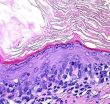(Press-News.org) DNA analysis has become increasingly efficient and cost-effective since the human genome was first fully sequenced in the year 2001. Sequencing a complete genome, however, still costs around US$1,000. Sequencing the genetic code of hundreds of individuals would therefore be very expensive and time-consuming. In particular for non-human studies, researchers very quickly hit the limit of financial feasibility.
Sequencing Groups Instead of Individuals
The solution to this problem is pool sequencing (Pool-Seq). Schlötterer and his team sequence entire groups of fruit flies (Drosophila melanogaster) at once instead of carrying out many individual sequencing reactions. While the resulting genetic information cannot be attributed to a single individual, the complete data set still provides important genetic information about the entire population.
In the two publications, Schlötterer and colleagues discuss the breadth of questions that can be addressed by Pool-Seq.
Searching for the Building Blocks of Evolution
In order to understand how organisms react to changes in the local environment, the genomes of entire populations can be analysed using Pool-Seq, before and after changed conditions. To do so, the researchers use the method of evolve and resequence (E&R). Schlötterer received an ERC Advanced Grant for this approach in 2012. E&R is a method in which the DNA of a group of individuals is sequenced. After exposing the descendents of this group for several generations to a certain stress, such as high temperature, extreme cold or UV radiation, and the evolved group is then sequenced again. A comparison of the two data sets uncovers genes that have changed in response to the selective stress. The approach makes it possible, for example, to filter out the genes that are involved in a darker pigmentation in response to UV radiation.
"Using this principle, we can perform evolution experiments at high speed. We are using this method to address a broad range of questions, ranging from the identification of genes which influence aging, or genes protecting against diseases and finally to understand the genetic changes which reduce the impact of climate change," Schlötterer explains.
Uncovering the Genetics of Aging and Disease Resistance
The evolve-and-resequence approach also makes it also possible to filter out the genes that regulate aging. This process involves selecting flies from a population, repeatedly over generations, that reach an especially old age. Several generations later, the researchers then compare the genomes of the "Methuselah" flies with those from normally aging flies in order to extract the genes that are involved in the aging process. This method also works to locate genes that provide resistance against certain diseases.
Bioinformatician and co-author, Robert Kofler, explains: "We are dealing with genetic change processes and are searching for variations in the genomes. The variations can help us to understand how evolution works."
INFORMATION:
Population Geneticists Trained in Vienna
Schlötterer heads the "Vienna Graduate School of Population Genetics" hosted by the University of Veterinary Medicine, Vienna. The doctoral program fills the gap between theoretical and experimental population genetics. 22 PhD students are currently conducting research in Vienna in the field of theoretical and experimental population genetics, bioinformatics, and statistics. http://www.popgen-vienna.at/
The article „Sequencing pools of individuals – mining genome-wide polymorphism data without big funding" by Christian Schlötterer, Taymond Tobler, Robert Kofler and Viola Nolte was published in the journal Nature Reviews Genetics. DOI:10.1038/nrg3803
http://www.nature.com/nrg/journal/vaop/ncurrent/full/nrg3803.html
The article "Combining experimental evolution with next-generation sequencing: a powerful tool to study adaptation from standing genetic variation" by Christian Schlötterer, Robert Kofler, E. Versace, Raymond Tobler and S. U. Franssen was published in the journal Heredity. DOI:HDY.2014.86
http://www.nature.com/hdy/journal/vaop/ncurrent/full/hdy201486a.html
About the University of Veterinary Medicine, Vienna
The University of Veterinary Medicine, Vienna in Austria is one of the leading academic and research institutions in the field of Veterinary Sciences in Europe. About 1,300 employees and 2,300 students work on the campus in the north of Vienna which also houses five university clinics and various research sites. Outside of Vienna the university operates Teaching and Research Farms. http://www.vetmeduni.ac.at
Scientific Contact
Prof. Christian Schlötterer
Institute of Population Genetics
University of Veterinary Medicine Vienna (Vetmeduni Vienna)
T +43 1 25077-4300
christian.schloetterer@vetmeduni.ac.at
Release Author
Susanna Kautschitsch
Science Communication / Public Relations
University of Veterinary Medicine Vienna (Vetmeduni Vienna)
T +43 1 25077-1153
susanna.kautschitsch@vetmeduni.ac.at
Scientists have used computer simulations to show how bacteria are able to destroy antibiotics – a breakthrough which will help develop drugs which can effectively tackle infections in the future.
Researchers at the University of Bristol focused on the role of enzymes in the bacteria, which split the structure of the antibiotic and stop it working, making the bacteria resistant.
The new findings, published in Chemical Communications, show that it's possible to test how enzymes react to certain antibiotics.
It's hoped this insight will help scientists to develop ...
The daily trimming of fingernails and toenails to make them more aesthetically pleasing could be detrimental and potentially lead to serious nail conditions. The research, carried out by experts in the School of Veterinary Medicine and Science at The University of Nottingham, will also improve our understanding of disease in the hooves of farm animals and horses.
Dr Cyril Rauch, a physicist and applied mathematician, together with his PhD Student Mohammed Cherkaoui-Rbati, devised equations to identify the physical laws that govern nail growth, and used them to throw ...
This news release is available in German. To date, antidotes exist for only a very few drugs. When treating overdoses, doctors are often limited to supportive therapy such as induced vomiting. Treatment is especially difficult if there is a combination of drugs involved. So what can be done if a child is playing and accidentally swallows his grandmother's pills? ETH professor Jean-Christophe Leroux from the Institute of Pharmaceutical Sciences at ETH Zurich wanted to find an answer to this question. "The task was to develop an agent that could eliminate many different ...
Its central finding is that our nervous system uses past visual experiences to predict how blurred objects would look in sharp detail.
"In our study we are dealing with the question of why we believe that we see the world uniformly detailed," says Dr. Arvid Herwig from the Neuro-Cognitive Psychology research group of the Faculty of Psychology and Sports Science. The group is also affiliated to the Cluster of Excellence Cognitive Interaction Technology (CITEC) of Bielefeld University and is led by Professor Dr. Werner X. Schneider.
Only the fovea, the central area of ...
People who have suffered spinal cord injuries are often susceptible to bladder infections, and those infections can cause kidney damage and even death.
New UCLA research may go a long way toward solving the problem. A team of scientists studied 10 paralyzed rats that were trained daily for six weeks with epidural stimulation of the spinal cord and five rats that were untrained and did not receive the stimulation. They found that training and epidural stimulation enabled the rats to empty their bladders more fully and in a timelier manner.
The study was published in ...
In a first step toward future human therapies, researchers at The Saban Research Institute of Children's Hospital Los Angeles have shown that esophageal tissue can be grown in vivo from both human and mouse cells. The study has been published online in the journal Tissue Engineering, Part A.
The tissue-engineered esophagus formed on a relatively simple biodegradable scaffold after the researchers transplanted mouse and human organ-specific stem/progenitor cells into a murine model, according to principal investigator Tracy C. Grikscheit, MD, of the Developmental Biology ...
LOS ANGELES (Oct. 16, 2014) – Male and female brains are not equal when it comes to the biological response to a high-fat diet. Cedars-Sinai Diabetes and Obesity Research Institute scientist Deborah Clegg, PhD, and a team of international investigators found that the brains of male laboratory mice exposed to the same high-fat diet as their female counterparts developed brain inflammation and heart disease that were not seen in the females.
"For the first time, we have identified remarkable differences in the sexes when it comes to how the body responds to high-fat ...
New research into a rare pathogen has shown how a unique evolutionary trait allows it to infect even the healthiest of hosts through a smart solution to the body's immune response against it.
Scientists at the University of Birmingham have explained how a particular strain of a fungus, Cryptococcus gattii, responds to the human immune response and triggers a 'division of labour' in its invading cells, which can lead to life-threatening infections.
Once inhaled, the pathogen can spread through the body to cause pneumonia or meningitis. The outbreak strain of this fungus ...
(Vienna, October 17, 2014) Two new pill-only regimens that rapidly cure most patients with genotype 1 hepatitis C (HCV) infection could soon be widely prescribed across Europe. Two recently-published studies1,2 confirmed the efficacy and safety of combination therapy with two oral direct-acting antiviral agents (DAAs), with around 90% of patients cured after just 12-weeks of treatment.
At the 22nd United European Gastroenterology Week (UEG Week 2014) in Vienna, Austria, Professor Michael P. Manns from Hannover Medical School in Germany will be presenting this data and ...
A group of researchers led by Melina Bersten of the Kavli Institute for the Physics and Mathematics of the Universe recently presented a model that provides the first characterization of the progenitor for a hydrogen-deficient supernova. Their model predicts that a bright hot star, which is the binary companion to an exploding object, remains after the explosion. To verify their theory, the group secured observation time with the Hubble Space Telescope (HST) to search for such a remaining star. Their findings, which are reported in the October 2014 issue of The Astronomical ...




